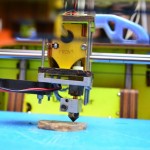
Several different 3D Printing processes have been invented since the late 1970s. The printers were originally large, expensive, and highly limited in what they could produce.
A large number of additive processes are now available. They differ in the way layers are deposited to create parts and in the materials that can be used. Some methods melt or soften material to produce the layers, e.g. selective laser melting (SLM) or direct metal laser sintering (DMLS), selective laser sintering (SLS), fused deposition modeling (FDM), while others cure liquid materials using different sophisticated technologies, e.g. Stereolithography (SLA). With laminated object manufacturing (LOM), thin layers are cut to shape and joined together (paper, polymer, metal). Each method has its own advantages and drawbacks, and some companies consequently offer a choice between powder and polymer for the material from which the object is built. Some companies use standard, off-the-shelf business paper as the build material to produce a durable prototype.
The main considerations in choosing a machine are generally speed, cost of the 3D Printer, cost of the printed prototype, and cost and choice of materials and color capabilities.
Method, process, procedure, technique:
Method type |
Technology |
Material |
Extrusion |
Fused deposition modeling (FDM) |
Thermoplastics (e.g. PLA, ABS), HDPE, eutectic metals, Rubber, modelling clay, Plasticine, RTV silicone, porcelain, metal clay, etc. |
Wire |
Electron Beam Freeform Fabrication (EBF) |
Almost any metal alloy |
Granular |
Direct metal laser sintering (DMLS) |
Almost any metal alloy |
Electron-beam melting (EBM) |
Titanium alloys |
Selective laser melting (SLM) |
Titanium alloys, Cobalt Chrome alloys, Stainless Steel, Aluminum |
Selective heat sintering (SHS) |
Thermoplastics |
Selective laser sintering (SLS) |
Thermoplastics, metal powders, ceramic powders |
Powder Bed and Inject Head 3D Printing |
Plaster-based 3D Printing (PP) |
Plaster |
Laminated |
Laminated object manufacturing (LOM) |
Paper, metal foil, plastic film |
Light polymerized |
Stereolithography (SLA) |
Photopolymer |
Digital Light Processing (DLP) |
Photopolymer |
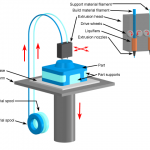
FDM works on an additive principle by laying down material in layers; a plastic filament or metal wire is unwound from a coil and supplies material to produce a part. The technology was developed by S. Scott Crump in the late 1980s and was commercialized in 1990. FDM printers use two kinds of materials, a […]
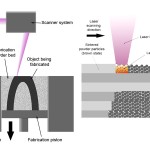
Selective Laser Sintering (SLS) is an additive manufacturing technology developed under sponsorship by the Defense Advanced Research Projects Agency (DARPA) and acquired in 2001 by 3D Systems. SLS uses high power laser (for example CO2 laser) to fuse small particles of plastic, metal or ceramic powder together, layer-by-layer, to form a solid model. The system consists of a […]
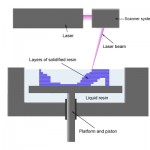
Stereolithography is the oldest method used to create 3D-printed objects. It’s the process by which a uniquely designed 3D printing machine, called a Stereolithograph apparatus (SLA) converts liquid plastic into solid objects. The process was patented as a means of rapid prototyping in 1986 by Charles Hull, co-founder of 3D Systems, Inc., a leader in […]

Three Dimensional Printing (3DP) technology was developed at the Massachusetts Institute of Technology and licensed to several corporations. An inkjet print head moves across a bed of powder, selectively depositing a liquid binding material. A thin layer of powder is spread across the completed section and the process is repeated with each layer adhering the […]
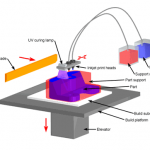
PolyJet 3D printing is similar to inkjet document printing, but instead of jetting drops of ink onto paper, PolyJet 3D Printers jet layers of liquid photopolymer onto a build tray and instantly cure them with UV light. The fine layers build up to create a precise 3D model or prototype. Models are ready to handle […]
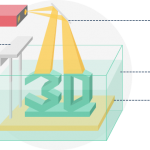
Digital Light Processing uses a projector, like the kind used for office presentations or in home theaters, to project the image of the cross section of an object into a vat of photopolymer (light reactive plastic). The light selectively hardens only the area specified in that image. The most recently printed layer is then repositioned […]
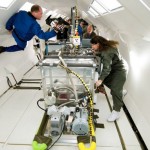
NASA Langley Research Center (LaRC) is the originator and world leader in Electron Beam Freeform Fabrication (EBF3) technology development. The Additive Manufacturing Process was primarily developed and engineered by Karen Taminger, material research engineer for NASA LaRC. EBF3 is a NASA-patented additive manufacturing process designed to build complex, near-net-shape parts requiring substantially less raw material and finish machining than […]
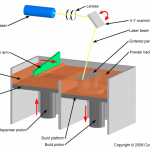
Direct Metal Laser Sintering (DMLS) is an additive metal fabrication (sintering) technology developed by EOS of Munich, Germany, often confused with the similar technical processes, selective laser sintering (SLS) or selective laser melting (SLM). The process involves use of a 3D CAD model whereby a .stl file is created and sent to the machine’s software. […]

Laminated Object Manufacturing is a rapid prototyping system developed by Helisys Inc that layers of adhesive-coated paper, plastic, or metal laminates are successively glued together and cut to shape with a knife or laser cutter. Objects printed with this technique are additionally modified by machining or drilling after printing. Typical layer resolution for this process […]









